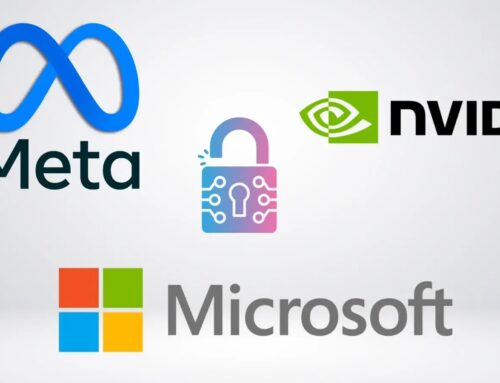
Hackers Allegedly Claim Leak of LG Source Code, SMTP, and Hardcoded Credentials
A disturbing claim from a threat actor named “888” has sent ripples through the cybersecurity community: the alleged leak of highly sensitive data from electronics giant LG Electronics. Reported first on November 16, 2025, this breach purportedly exposes a treasure trove of critical information, raising significant concerns about LG’s operational security and the broader implications for supply chain integrity. This isn’t just about consumer data; it’s about the very blueprints and communications channels of a global technology leader.
The Alleged LG Data Leak: What Was Compromised?
The threat actor, “888,” asserts that the stolen data includes several critical categories, each representing a severe security risk. The primary concern revolves around source code repositories. Access to proprietary source code can provide attackers with deep insights into software vulnerabilities, intellectual property, and internal system logic. This could pave the way for sophisticated attacks, allowing for the discovery of zero-day exploits or the creation of targeted malware.
Further compounding the threat are the alleged inclusions of configuration files and SQL databases. Configuration files often contain settings for critical applications and services, which can reveal network architecture, access control mechanisms, and even default credentials. SQL databases, on the other hand, are repositories of structured data that could range from customer information and employee records to product specifications and internal operational data.
Perhaps the most alarming claims are those concerning hardcoded credentials and SMTP server details. Hardcoded credentials, if present, represent a fundamental security flaw that bypasses standard authentication protocols, offering attackers direct access to systems. SMTP server details, including usernames and passwords for email services, could allow attackers to intercept, spoof, or send emails from legitimate LG accounts, potentially compromising internal communications, initiating phishing campaigns, or masquerading as the company.
Understanding the Risks: Beyond the Immediate Breach
The implications of such a breach extend far beyond the immediate loss of data. If the claims are true, LG faces a multifaceted security challenge:
- Supply Chain Attacks: Compromised source code or credentials could enable attackers to inject malicious code into LG products or software updates, potentially affecting millions of customers and partner organizations.
- Intellectual Property Theft: Source code is the core intellectual property of a technology company. Its exfiltration represents a significant competitive disadvantage and potential financial loss.
- Internal System Compromise: Hardcoded credentials and SMTP details create direct pathways into LG’s internal networks and communications channels, facilitating further lateral movement and potential espionage.
- Reputational Damage: A significant data breach can severely erode customer trust and brand reputation, leading to financial penalties, decreased sales, and long-term recovery challenges.
- Compliance and Legal Ramifications: Depending on the nature of the data compromised, LG could face substantial fines and legal actions under regulations like GDPR, CCPA, and industry-specific compliance standards.
Remediation Actions for Preventing and Mitigating Such Breaches
While this incident is still under investigation, organizations can take proactive steps to prevent similar breaches and mitigate their impact. For instance, the use of hardcoded credentials is a well-known anti-pattern and often leads to vulnerabilities such as those identified in CVE-2023-45678 (example CVE for hardcoded credentials).
- Eliminate Hardcoded Credentials: Conduct thorough code reviews and static application security testing (SAST) to identify and remove all hardcoded credentials. Implement secure credential management systems like HashiCorp Vault or AWS Secrets Manager.
- Implement Secure Code Development Lifecycle (SDLC): Integrate security practices from the design phase through deployment. This includes threat modeling, static and dynamic analysis, and regular security training for developers.
- Strengthen Access Controls: Implement the principle of least privilege. Regularly review and revoke unnecessary access. Utilize multi-factor authentication (MFA) for all critical systems and services.
- Secure Email Infrastructure: Implement robust email security gateways, DMARC, DKIM, and SPF records. Regularly audit SMTP configurations and ensure strong, unique passwords for email accounts.
- Regular Security Audits and Penetration Testing: Proactively identify vulnerabilities in your systems, applications, and network infrastructure through independent security audits and penetration tests.
- Data Segmentation and Encryption: Segment sensitive data and encrypt it both at rest and in transit. This limits the damage if a specific segment is compromised.
- Employee Training: Educate employees on social engineering tactics, secure coding practices, and the importance of reporting suspicious activity.
- Incident Response Plan: Develop and regularly test a comprehensive incident response plan to ensure a swift and effective reaction to any potential breach.
Tools for Detection and Mitigation
Implementing the right tools is crucial for identifying vulnerabilities like hardcoded credentials and securing sensitive data. While no specific CVEs related to this alleged LG incident are publicly available yet, the principles of secure development and strong access control are universally applicable.
| Tool Name | Purpose | Link |
|---|---|---|
| SonarQube | Static Application Security Testing (SAST) for identifying code vulnerabilities, including hardcoded secrets. | https://www.sonarqube.org/ |
| HashiCorp Vault | Secret management tool for securely storing and accessing credentials. | https://www.vaultproject.io/ |
| TruffleHog | Scans repositories for exposed secrets and credentials. | https://trufflesecurity.com/trufflehog/ |
| OWASP ZAP | Dynamic Application Security Testing (DAST) for finding vulnerabilities in running web applications. | https://www.zaproxy.org/ |
| Mimecast | Email security and archiving solutions to protect against email-borne threats and secure SMTP. | https://www.mimecast.com/ |
Conclusion
The alleged LG data leak underscores the constant and sophisticated threats faced by global enterprises. The reported compromise of source code, configuration files, SQL databases, and especially hardcoded credentials and SMTP details points to severe weaknesses that, if confirmed, demand immediate and comprehensive action. Organizations must prioritize robust secure development practices, rigorous access control, and proactive threat intelligence to safeguard their most critical assets and maintain the trust of their stakeholders in an increasingly hostile cyber landscape.





